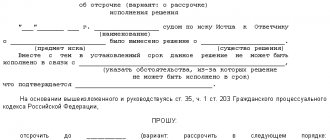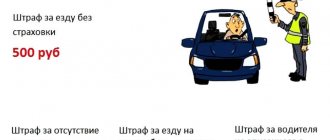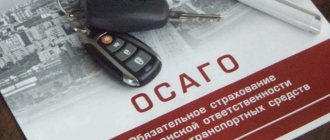How to correctly fill out a protocol on an administrative offense - recommendations
We fill out the protocol correctly.
RECOMMENDATION:
If you do not agree with the alleged violation, then proceed as follows:
— Do not get into the traffic police car to fill out a protocol.
You have no such obligation. The inspector will not fall apart if he carries a piece of paper weighing 30 grams from his car to yours. Moving yourself into a traffic police patrol car will not mitigate your punishment in any way.
— When drawing up a protocol, indicate only your place of residence
to all other questions like “where do you work?”, “how much do you earn?” answer like this:
“I will provide this information only to the investigator for the interrogation report”
— While the inspector is filling out the protocol, take a photo of the place of the “violation”
You can even use your mobile phone if you don’t have a camera with you. 4-6 pictures from different angles
The inspector handed you a protocol to fill out, then proceed as follows:
1) Ask the inspector - “Will they still make entries in the protocol?”
- if “yes”, then return the protocol to the inspector - let him add it
2) If the inspector has not filled in the “witnesses” column, feel free to put a large Z
- if witnesses are included, but you do not observe them, demand that they be presented to you
— if the inspector’s partner(s) are witnesses, demand that they present their official ID. Check with the data in the protocol. If your request is denied, call “02” and report a violation by the inspector.
3) In the column “explanation of the person...” it is necessary to make an entry:
“I don’t agree with the violation. Didn't violate any traffic rules. I need the help of a lawyer.
There was no plan drawn up.” The rest is at your discretion, just short.
If you have a DVR, this is a huge plus. Then write:
“I have a video recording from the motion recorder”
4) Do not touch the column “attached to the protocol”
5) In the column “I have read the protocol...” make an entry: “Rights not explained”
this is the case if the inspector did not verbally explain Article 25.1 of the Code of Administrative Offences. Himself
Don't ask for a transcript. It is advisable that by this moment in the recorder
the memory card does not run out, because you will hear a lot of “interesting” things.
6) Column “Please send the protocol...”
filled in when you are in another city (region)
by doing this you are requesting the forwarding of documents from the APN place to your place of residence
or vehicle registration (see Chapter 27 “You violated traffic rules in another city”)
7) After you fill it out, separate the copy yourself and put it
in your pocket, give the original to the inspector. After this, we silently endure the inspector’s screams.
 No additions by the traffic police inspector after your painting.
No additions by the traffic police inspector after your painting.
Supposedly it is necessary to set a time and place for the “debriefing”. Inspector - You yourself are clear
They said they filled everything out. Notify about the place and time of the hearing
me with a summons from the traffic police department.
9) Take your documents and leave. Next, send a complaint for action
IDPS, to the prosecutor's office. They don't give you documents? — Call “02” (112).
EXPLANATION:
It depends on your correct and deliberate actions when drawing up the protocol whether you will be punished or not.
Do not get into the traffic police car to fill out a protocol. You have no such obligation!
While the traffic police inspector, by the sweat of his brow, is preparing a protocol, do not waste time. Take photographs of the APN site. Later (by choosing 2-3 successful photographs), attach these photos to the complaint to the prosecutor’s office, making sure to fill out Appendix No. 28. At the same time, there is no need to be “ashamed” of the inspector at all - we are talking about collecting evidence for further appeal and releasing you from liability. Feel free to take photographs.
The protocol must be drawn up immediately (Article 28.5 of the Code of Administrative Offenses “Time limits for drawing up a protocol on an administrative offense”), and if you are forced to wait, then on the part of the inspector this is an administrative offense (Article 12.35 of the Code of Administrative Offenses “Illegal restriction of the rights to drive and operate a vehicle ").
If the inspector unreasonably delays the process of drawing up a protocol, then you can politely ask him to draw up a protocol of your detention, making it clear that the inspector has no grounds for detention. And declare your intention to call “02”
Plenum of the Supreme Court of March 24, 2005, paragraph 13 “When considering cases of administrative offenses, the judge must proceed from the principle of the presumption of innocence of the person against whom the proceedings are being carried out, enshrined in Article 1.5 of the Code of Administrative Offenses of the Russian Federation. The implementation of this principle is that a person brought to administrative responsibility is not obliged to prove his innocence; guilt in committing an administrative offense is established by judges, bodies, officials authorized to consider cases of administrative offenses. Irremovable doubts about the guilt of a person brought to administrative responsibility must be interpreted in favor of this person.” This is in theory. In practice, in the administrative process there is no prosecutor, and his functions are assumed by the examiner. The protocol is the main evidence of your guilt (Article 26.2 of the Administrative Code). It largely depends on how it is drawn up: whether you will be punished or not. Whether the inspector is right or wrong is a deep shame for him, because now his monetary income has little bearing on whether he acts legally or not.
The contents of the protocol on an administrative offense are set out in detail in Art. 28.2 Code of Administrative Offenses of the Russian Federation. This protocol indicates: the date and place of its preparation, position, surname, name, patronymic of the person who compiled the protocol, information about the identity of the offender, the place and time of commission and the essence of the administrative offense, a normative act providing for liability for the offense; names, addresses of witnesses and victims, if any.
Once you receive the protocol in your hands, you need to read it carefully.
Any data incorrectly written by the inspector is your further advantage. For example, the last name (place of residence, car brand) is indicated with a grammatical error. Such errors cast doubt on the facts presented by IDPS. Remember that the inspector can snatch the protocol from your hands at any time, rush it, etc. Therefore, make it a rule to fill out the fields in the protocol while sitting in your own car.
Then look at what you are signing for. Find the place where you sign for an explanation of your rights and responsibilities, this column is marked as follows: “I have read the protocol, the rights and responsibilities have been explained to me...”. There is no need to ask the inspector to do this, if the inspector has not explained to you (orally) the rights and obligations provided for in Article 25.1 of the Administrative Code, then instead of signing, write “Rights not explained.” This is a direct indication of a violation of procedural rules. It is not uncommon that, on the basis of such facts, the court does not accept the case for proceedings. The “read on the back” option is not applicable in this case. It is not your responsibility to read them, it is their responsibility to explain them to you! It's a rare inspector who can do this.
In the person’s explanations, it is imperative to write “I do not agree with the violation.” You have the right to put this phrase in Article 1.5 of the Administrative Code “Presumption of Innocence” and Article 51 of the Constitution of the Russian Federation “No one is obliged to testify against himself...”. It doesn’t matter at all that the violation occurred right “in front of” the inspector. It is his responsibility to prove, by legal means, that a violation occurred. Let him work for a salary from our taxes. Later, in a calm atmosphere, preferably with a defender, you will figure out whether there was a violation at all.
The second mandatory phrase in the explanation: “I require the help of a lawyer.”
Another common example of violation of procedural rules. The inspector tells you that you will invite a lawyer to court later, but here and now it is completely unnecessary. Of course, the inspector can be understood; the presence of a legally competent defense lawyer at the scene of the violation means the absence of proposals to “agree” and further headaches when writing reports upon request from the prosecutor’s office on the merits of your complaints. In this case, the inspector is openly deceiving you. Article 25.5 of the Code of Administrative Offenses “Defender and Representative” gives the right to a lawyer to be present. Unfortunately, the law does not regulate the waiting time for your lawyer. If he managed to arrive before you gave the inspector the signed protocol, then good. If not, then in your complaint to the prosecutor’s office, then indicate that the inspector refused to receive legal assistance.
For example, you expect the defender to arrive in 15 minutes. Then you can play for time by slowly filling out the protocol or talking with the inspector about your disagreement with the violation. You should not require a lawyer if you agree with the violation, and writing a protocol and resolution is an empty formality, because this is the procedure for a fine of more than 100 rubles.
The third obligatory phrase in the explanations: “The scheme was not drawn up” if there was none. Otherwise, later the diagram may appear with a comment from the traffic police that you refused to sign. If the diagram is drawn up in one copy, write: “A copy of the diagram is refused.” When charged with driving into oncoming traffic, a diagram with your comments will be a very useful documentary appendix to the protocol.
As an example: an inspector hid one and a half kilometers from a section of the road where overtaking is prohibited. He observes everything that happens through army binoculars, which are in no way a certified device used in military service. And this is a violation of Order No. 185 of the Ministry of Internal Affairs, in particular, Article 46 “The use of technical means not provided for by the standard regulations when controlling traffic is not allowed”
The use of binoculars is not listed in any instructions. Therefore, this evidence was obtained in violation of the law. When drawing up a diagram, the inspector will have to indicate in which place on the road the violation was committed. It should also indicate where the inspector himself was at that time. And the picture will become clearer. A photo of an inspector with binoculars on his chest is a powerful argument when considering a case in court. The diagram is one type of evidence of your guilt, and its absence is another violation of procedural rules by the inspector.
In addition to the diagram, other documents can be attached to the protocol. For example, the protocol handed over to you for signature has already been completed in full, incl. the date of “debriefing” in the Department of Administrative Practice is indicated. No one forbids you to write a petition to postpone the consideration date. Write down in the protocol that a petition is attached to it. It is unlikely that the inspector will immediately write a ruling that the application is denied and will be able to comply with its form (Article 29.12 of the Code of Administrative Offenses), and the big question is whether he has the right to consider the application. Does his position allow this? An oral definition will not suit you, because... it must be signed by the inspector (clause 29.12 clause 3 of the Administrative Code).
Demand that your passengers be included in the protocol as witnesses. Article 25.6 of the Code of Administrative Offenses states that “any person who knows something about the case can act as a witness in the case.” If the inspector refuses to enter them into the protocol, claiming that they are interested parties, enter them into the protocol in your own hand - in the column “explanation of the person...”. Interested persons under the Code of Administrative Offenses may be witnesses, experts, but not witnesses.
If the inspector did not include his witnesses in the protocol, put Z in these lines. Again, another plus in your favor. But be prepared to listen to him grumble that you shouldn’t have done this. Don't worry - there is no penalty for this. This is only a “mistake” by the inspector. But if the inspector filled out the witnesses column, but there was no real presence, demand that they be shown to you. After refusing this, record this fact in the column “explanations of the person...”. But it’s better to call “02”.
When an inspector presents “dummy” witnesses, he commits a criminal offense under Art. 292 of the Criminal Code of the Russian Federation “Official forgery”. This article provides for liability for an official entering knowingly false information into official documents, in the form of imprisonment for up to two years.
If the inspector, as witnesses, includes his partner (or two) in the protocol, it is imperative that you familiarize yourself with the details of their official ID and check them with the protocol. The catch here is this: the inspector fills out the data of the “witnesses” he had prepared long ago, and he tells you that these are the data of my service partners - and by the way, that’s what they are.
Do not write stories like “I thought it was possible”, “I didn’t comply due to severe frustration”, “I drove quickly because the car is powerful” in the protocol. Express your point of view on the accusation and the actions of the inspector clearly, briefly and concisely. Never write anything in the protocol under the dictation of a traffic police inspector. If you doubt what exactly you need to write, then it’s better not to write anything. Later, it’s better to express your point of view on paper with a lawyer in the form of a complaint to the prosecutor’s office and the traffic police.
Be sure to sign the protocol so that the inspector does not write unnecessary things into it, and immediately, without asking the inspector’s permission, take your copy of the protocol.
Article 28.2 of the Code of Administrative Offenses of the Russian Federation. Protocol on administrative offense (current version)
1. A protocol is drawn up on the commission of an administrative offense, except for the cases provided for in Article 28.4, parts 1, 3 and 4 of Article 28.6 of this Code.
2. The protocol on an administrative offense shall indicate the date and place of its preparation, the position, surname and initials of the person who compiled the protocol, information about the person against whom the case of an administrative offense has been initiated, surnames, first names, patronymics, addresses of the place of residence of witnesses and victims, if there are witnesses and victims, the place, time of commission and event of the administrative offense, an article of this Code or the law of a constituent entity of the Russian Federation providing for administrative liability for this administrative offense, an explanation of the individual or legal representative of the legal entity against whom the case was initiated, other information, necessary to resolve the case.
3. When drawing up a protocol on an administrative offense, an individual or a legal representative of a legal entity against whom a case of an administrative offense has been initiated, as well as other participants in the proceedings, are explained their rights and obligations under this Code, which is recorded in the protocol.
4. An individual or a legal representative of a legal entity against whom a case of an administrative offense has been initiated must be given the opportunity to familiarize themselves with the protocol on the administrative offense. These persons have the right to submit explanations and comments on the contents of the protocol, which are attached to the protocol.
4.1. In the event of failure to appear by an individual, or a legal representative of an individual, or a legal representative of a legal entity in respect of whom proceedings for an administrative offense are being conducted, if they are notified in the prescribed manner, a protocol on the administrative offense is drawn up in their absence. A copy of the protocol on an administrative offense is sent to the person in respect of whom it was drawn up within three days from the date of drawing up the said protocol.
5. The protocol on an administrative offense is signed by the official who compiled it, an individual or a legal representative of a legal entity against whom a case of an administrative offense has been initiated. If these persons refuse to sign the protocol, as well as in the case provided for in Part 4.1 of this article, a corresponding entry is made in it.
6. The individual or legal representative of the legal entity against whom a case of an administrative offense has been initiated, as well as the victim, is given a copy of the protocol on the administrative offense against signature.










